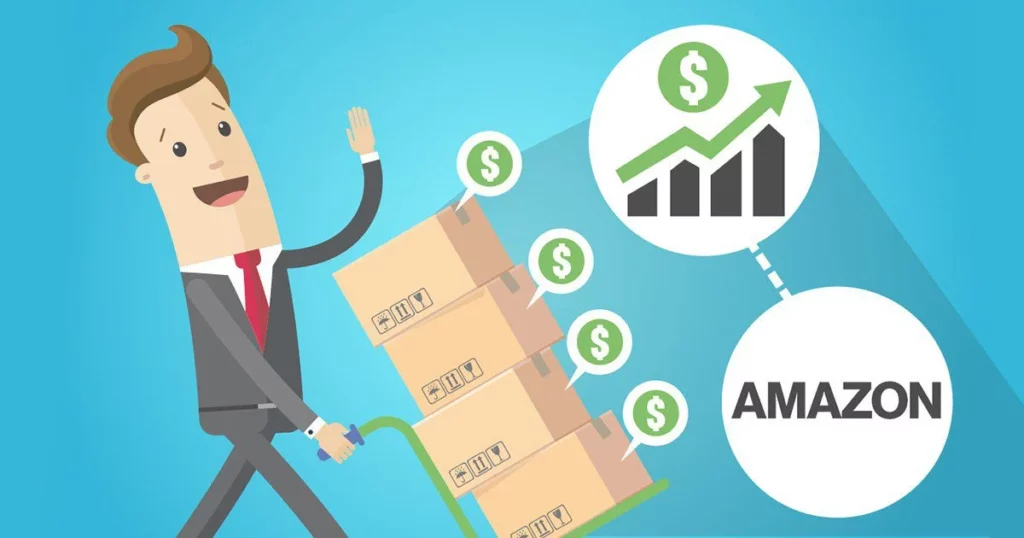
09 Jan Amazon Pricing Strategies: Everything you need to know!
What is the pricing?
The amount of cash you pay for your items is what is referred to as “pricing,” but there is much more to it than that. Indicators of how much you respect your brand, product, and clients are baked into your Amazon Pricing Strategies for the benefit of potential consumers. It is one of the first factors that can influence a customer’s decision to purchase your product. As a result, it has to be computed with confidence.
Most entrepreneurs who are establishing a business concentrate their creative efforts on refining an idea and creating a marketable product. However, you must determine the value of any good or service before you start trying to sell it. Pricing strategy thus becomes important in this situation.
Key Pricing Strategies
Pricing based on the value
Value-based pricing delivers on its promise. With this strategy, a company will set the pricing of its products primarily based on the real or perceived value of the product or service.
It frequently works best for specialized items, customized or expert solutions, and handcrafted commodities like jewelry, high-end clothing, or luxury alcoholic beverages. It may also be effective for products that come with “extras” or are well-known due to their connections to notable individuals or occasions.
Contrary to the “undercut the competition” method, this tactic focuses more on emphasizing why your product is deserving of the higher price. That doesn’t mean you won’t be curious about what your rivals are charging and how you stack up.
However, if you’re familiar with the terrain, it’s important to understand how your product will make your consumers’ lives better, whether it’s by assisting them in reaching their objectives, saving them time and headaches, or raising their social standing and perceived attractiveness.
Value-based pricing, if done correctly, will result in greater revenues for you. However, it can be a time-consuming and complicated approach, so it’s crucial to balance the two.
Pricing Strategy Based on Competition
Competitive pricing is another name for competition-based pricing. This pricing approach does not take into consideration the cost of the product or consumer demand; instead, it concentrates on the current market rate (or going rate) for a company’s goods or services.
Instead, a pricing strategy focused on competition uses the prices of rivals as a baseline. Due to the possibility that a little price difference would be the determining factor for buyers, businesses that compete in a highly flooded market may opt for this technique.

Freemium Business Model
Freemium pricing, which combines the terms “free” and “premium,” is when businesses provide a basic version of their product in the hopes that customers will ultimately pay to upgrade or gain access to more features.
Freemium is a pricing approach that SaaS and other software firms frequently employ, as opposed to cost-plus. They choose this method since free trials and short-term memberships provide customers with a glimpse of a software’s capabilities while also helping to establish trust before they make a purchase.
With freemium, a business’s prices must reflect the value consumers assign to its offerings. For instance, businesses that provide a free version of their software cannot demand $100 from consumers to upgrade to the commercial version. Prices must have a modest entrance barrier and increase gradually as customers are given more features and advantages.
Price dumping: bigger, quicker payouts
A “price skimming” approach is when an online retailer sets its starting price as high as its target market would bear before gradually lowering it. The company can cut prices to entice a new, more price-conscious consumer base when demand from the initial customers is met and additional rivals enter the market.
While demand is strong and there is little competition, the objective is to increase income. Apple employs this pricing strategy to cover the expenses associated with creating new products like the iPhone.
High-Low Pricing Techniques
When a business offers a product at a high price upfront and then reduces that price when the item loses its novelty or usefulness, this is known as a high-low pricing strategy. For this reason, this technique may also be referred to as a “discount pricing strategy.” Discounts, clearance sections, and year-end deals are instances of high-low pricing in action.
Retail and Amazon FBA businesses that offer seasonal items or things that vary often, such as apparel, décor, and furniture, frequently employ high-low pricing. Why do sellers find a high/low price scheme appealing? Customers like looking forward to bargains and discounts, which is why Black Friday and other days with widespread reductions are so well-liked.

Price penetration and price reduction
It’s no secret that consumers enjoy discounts, markdowns, sales, and other associated promotions. This is why, according to 97% of survey participants in a study by Software Advice, discounts are the most popular pricing strategy for retailers in all industries.
Economy pricing
Targeting clients who want to save as much money as they can on the product or service they are buying is part of an economic pricing strategy. Big box stores with economy pricing methods include Walmart and Costco. Adopting an economy pricing strategy is dependent on your overhead expenses and the total worth of your goods, much like premium pricing.
Package price
Bundle pricing is the practice through which businesses group many things and offer them for less than they would each cost alone. An excellent approach to moving a lot of products quickly is through bundle pricing. Profits on low-value products must exceed losses on high-value items in a bundle for the pricing strategy to be effective.
Adaptive pricing
With dynamic pricing, you may adjust the cost of your products at any time in response to current market conditions. Dynamic pricing is well-exemplified by Uber’s surge pricing. When demand is minimal, Uber can be a reasonable choice. But since demand is sure to increase when it rains during morning rush hour, the cost of an Uber will soar. Depending on the season for your product or service, smaller retailers may also be able to accomplish this.

No Comments